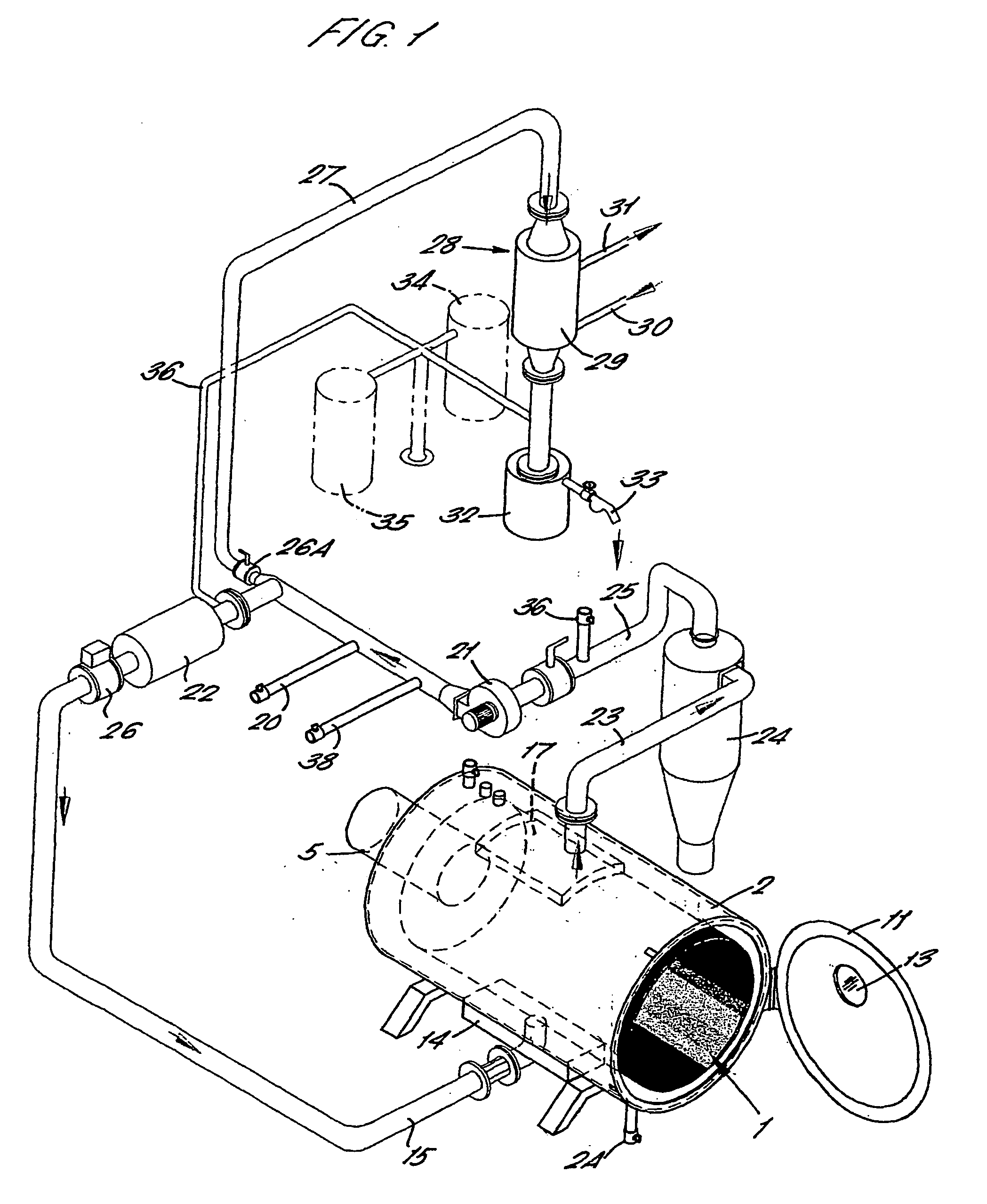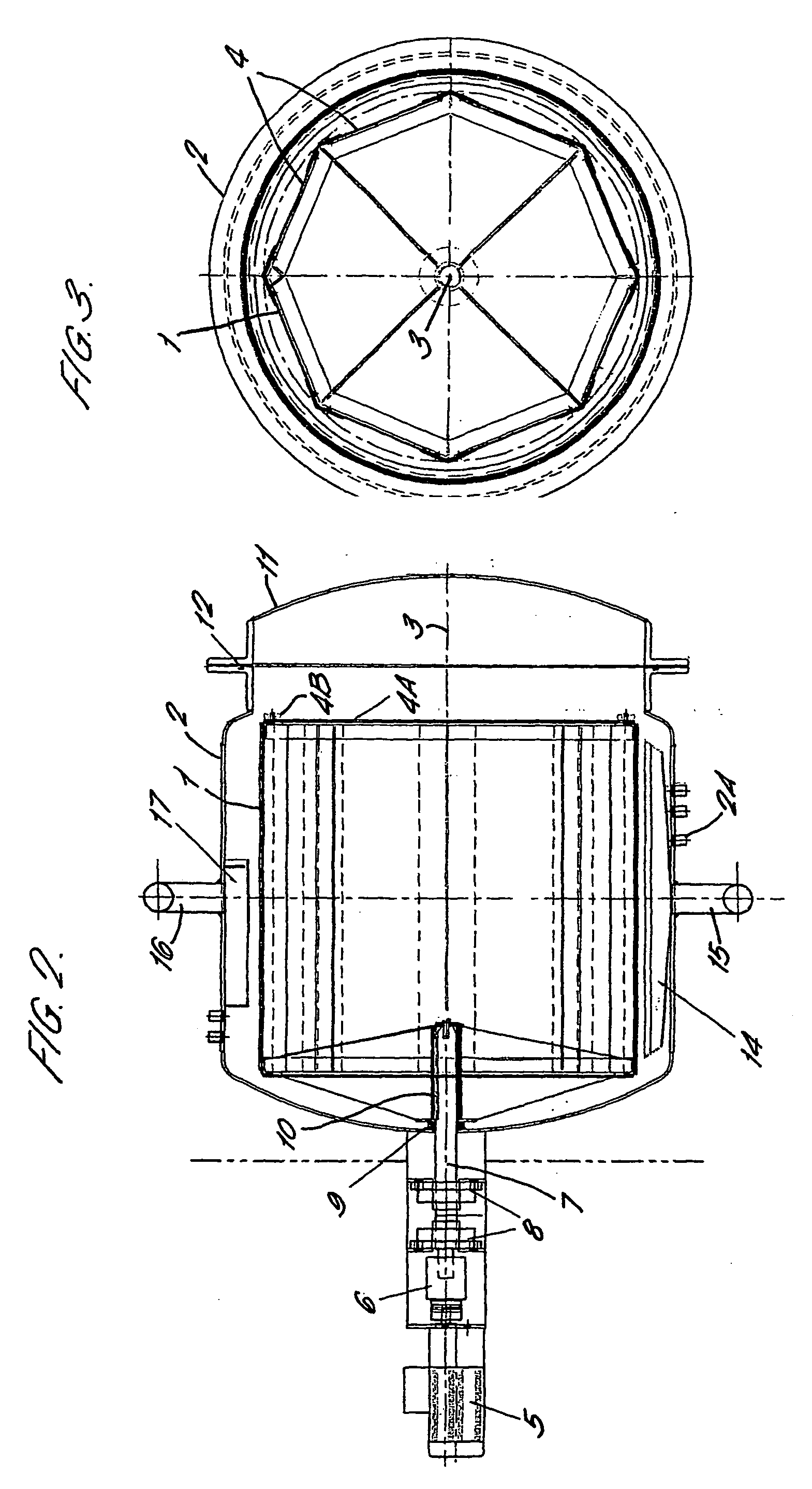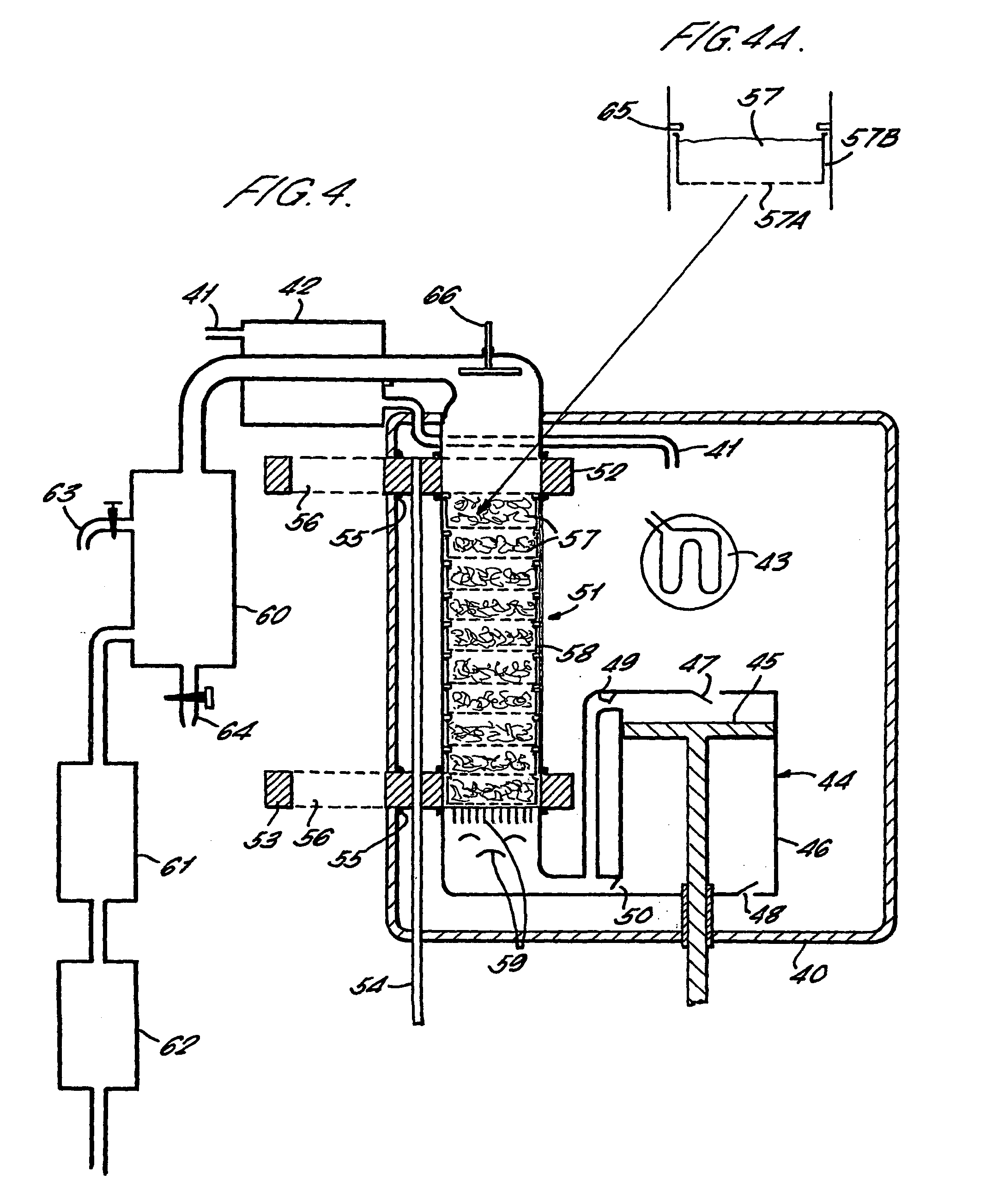Processes and apparatus for extraction of active substances and enriched extracts from natural products
a technology of extracts and extracts, applied in the direction of biocide, food shaping, separation processes, etc., can solve the problems of large quantity of inert material (ballast) that does not have therapeutic value, large quantity of inert material (ballast) extracted, microbiological spoilage, etc., to avoid expensive lagging of individual components
- Summary
- Abstract
- Description
- Claims
- Application Information
AI Technical Summary
Benefits of technology
Problems solved by technology
Method used
Image
Examples
example 2
Extraction with Supercritical Carbon Dioxide
[0113] 100 g of cannabis (high CBD chemovar) are coarsely chopped in a Hobart cutter mill then decarboxylated as described in Example 1. Plant mass is packed, tamping down between successive layers, into the cavity of a supercritical fluid extraction apparatus. The mass is further compacted by axial pressure and frits are installed at either end of the cannabis mass. Carbon dioxide at a pressure of 100 bar and a temperature of 32.degree. C. is admitted to the apparatus and extraction continued for 4 hours. At the end of this time eluate is vented through a pressure reduction system and the extract emerging at atmospheric pressure is collected in a glass vessel as a yellow / brown oil.
[0114] The distillate is dissolved in dehydrated ethanol and cooled to a temperature of -20.degree. C. .+-.1.degree. C. for 24 hours and the waxy material removed by filtration. This process, known as "winterisation", is used in the oil industry to de-wax oils, ...
example 3
Extraction with Heated Gas (Nitrogen)
[0116] Five kilos of coarsely chopped medicinal cannabis was loaded into the drum of an apparatus of the type shown in FIG. 1. Distillation of cannabinoids was effected with the use of pharmaceutical quality nitrogen at a temperature between 175.degree. C. and 250.degree. C., which is below the temperature at which plant material chars or pyrolyses.
example 4
Extraction with Heated Gas (Reducing Steam)
[0117] Using apparatus of the type illustrated in FIG. 1, 5 kg of freshly harvested cannabis was placed into the drum. The cannabis flowering heads and leaves were separated from stalk using a serrated comb with sharpened tines. The apparatus was equilibrated to a temperature of 110.degree. C. and steam was introduced at 150.degree. C. while the drum was set to rotate. A solution of sodium metabisulphite (10%) is introduced into the flow of steam in a quantity sufficient to give 10-500 parts of sulphur dioxide per million parts of wet biomass. When mixed with wet biomass, sodium metabisulphite reacts to produce sulphur dioxide which provides an antioxidant environment in which the extraction can be carried out. Oxidation of the extract is thereby minimised.
[0118] Vapour leaving the chamber was condensed and produced a mixture of oil and aqueous layer. The volatile oil so produced is useful as a component of medicinal flavouring and perfumer...
PUM
| Property | Measurement | Unit |
|---|---|---|
| Fraction | aaaaa | aaaaa |
| Fraction | aaaaa | aaaaa |
| Fraction | aaaaa | aaaaa |
Abstract
Description
Claims
Application Information
 Login to View More
Login to View More - R&D
- Intellectual Property
- Life Sciences
- Materials
- Tech Scout
- Unparalleled Data Quality
- Higher Quality Content
- 60% Fewer Hallucinations
Browse by: Latest US Patents, China's latest patents, Technical Efficacy Thesaurus, Application Domain, Technology Topic, Popular Technical Reports.
© 2025 PatSnap. All rights reserved.Legal|Privacy policy|Modern Slavery Act Transparency Statement|Sitemap|About US| Contact US: help@patsnap.com



